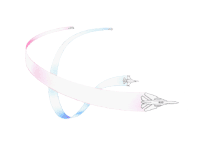
Higher G's if you began the maneuver without slowing the airspeed enough at the beginning. Expect about 3 1/2 G's negative at the bottom. At the bottom you'll be straight and level inverted. Push the nose down to begin the same track as a split S. Slow first to not exceed the maximum speed at the bottom of the maneuver.
#Air combat maneuvers scissors full
This is where the aircraft is around 150 KIAS, The Aircraft is usually straight and level or is carrying a small rate of decent, The Throttles are fully opened and the pilot pushes with full rudder pedal and forward stick, The aircraft will start tumbling around its nose with no horistontal roll, Its basically a rediculously tight outside loop, With the aircraft taking no more that 2 seconds to complete each tumble, Altitude and especially speed are lost very quickly when doing this manueveur, So it is limited to around 5 tumbles (usually less), This Manueveur is limited to propeller powered aerobatic aircraft (as fighter aircraft are too heavy), If the pilot holds this manueveur for too long then the aircraft can ender a deep stall and eventually a spin (which is sometimes done with a quick recovery to impress crowds) Aircraft that are capable of performing this are the : Extra 300/230/330, CAP 232/ 324, Ziviko Edge 540 and the SU 31 also high performance Biplanes such as Sean Tuckers "Challenger" and All Pitts S series aircraft, This very advanced and impressive maunueveur is regualarly performed by pilots such as : Alan Cassidy (Ex British champion) Mike Goulian, Patty Wagstaff, Peter Besenyei and Sean Tucker (these are most famous for its regular and well executed use.Įnglish Blunt, similar to a split S, begins straight and level. The 4 aircraft dive and then converge at one point almost simultaneously. Then one solo pilot flies directly up the center of the formation. This begins with 4 aircraft that climb vertically and then separate into four directions, their smoke trails resembling a bursting bomb. The most famous is the Bomb-burst, flown by the USAF Thunderbirds and US Navy Blue Angels. The demonstation flight teams involving 4 or 5 or 8 aircraft will create a maneuver with several aircraft and give it a name. Pugachev's Cobra-A manoeuvre performed by thrust-vectoring aircraft, where the pilot goes to an attitude of 90-120 degrees, then back to the straight and level without losing altitude. A barrel roll causes the aircraft rotate around an imaginery barrel. A standard Roll only involves rotating the wings around the fuselage. In the Outside Loop the plane also starts flying level, but instead of pulling up, it dives down and traces a continuous circle with the pilot staying on the outside of the vertical circle.Ĭuban 8 - Plane traces a figure 8 that is rotated on its side using loops and half rolls.īarrel Roll - Plane flies straight but rolls around the axis of his flight path. In the first one, the Plane is flying level and pulls up continuously, so that it traces a round pattern with the pilot staying inside the vertical circle. Loops - There are two kinds: Inside Loop, and Outside Loop. Thatch Weave - Similiar maneuver but two aircraft would weave back and forth crossing each other's path, so that an enemy could not attack the rear of one without being seen by the other friend, which now has the enemy plane inside its firing field. Scissors (name of a maneuver used in combat when you flew back and forth to bleed off speed and get behind an opponent) This is the opposite of an Immelmann Turn. Split S - Plane starts level and then rolls inverted and dives down and completes bottom half of loop, and continues flying in opposite direction. A/C pulls vertically until it is inverted and then rolls back upright and continues flying in opposite direction. Immelmann turn - one of the earlist combat maneuvers, named after the World War 1 ace.

Stunts and maneuvers flown in air shows and combat.


 0 kommentar(er)
0 kommentar(er)
